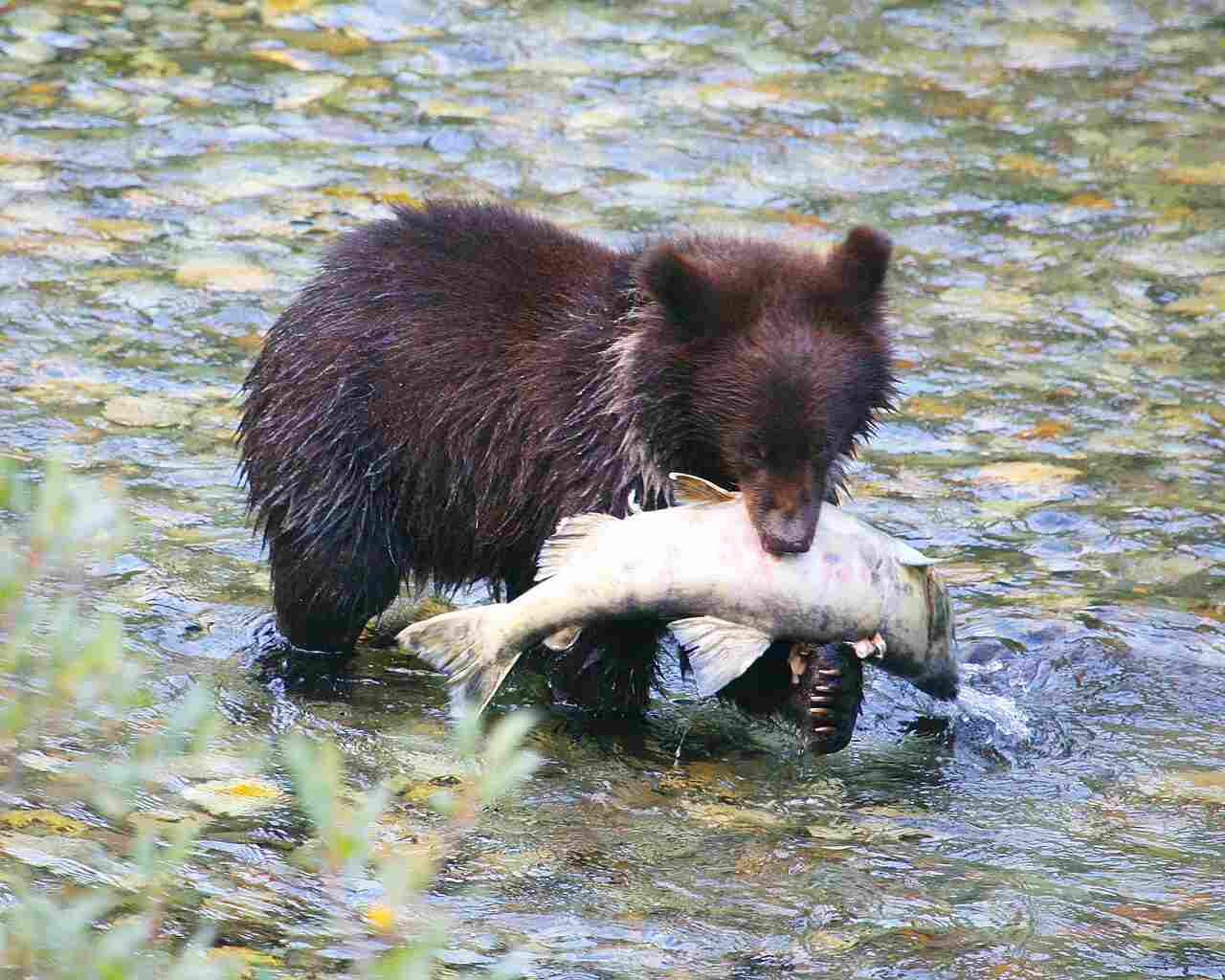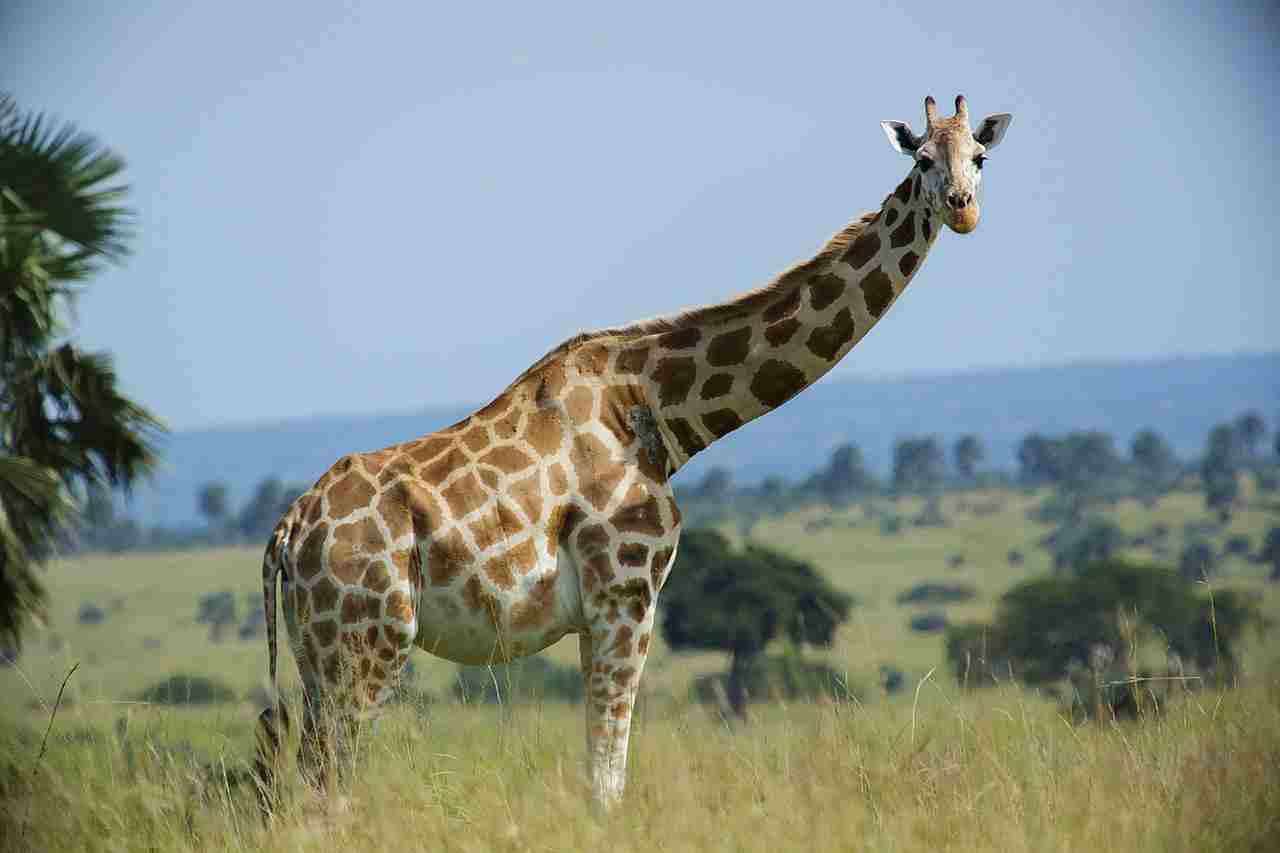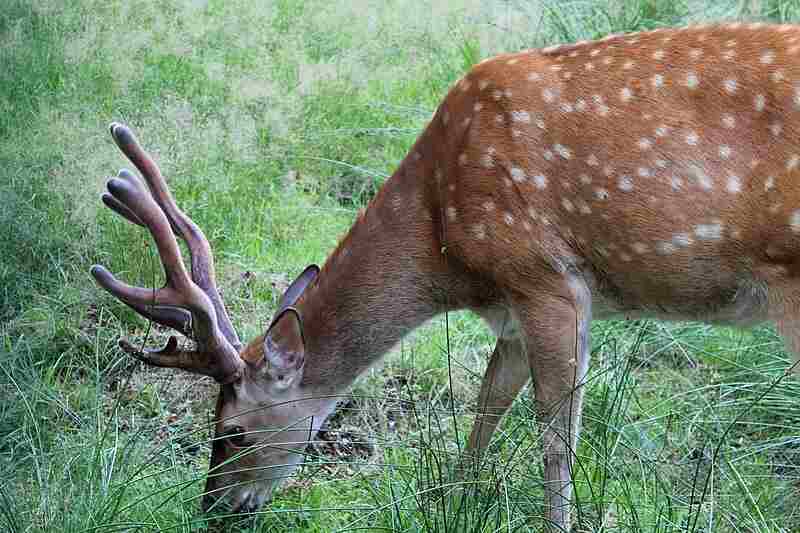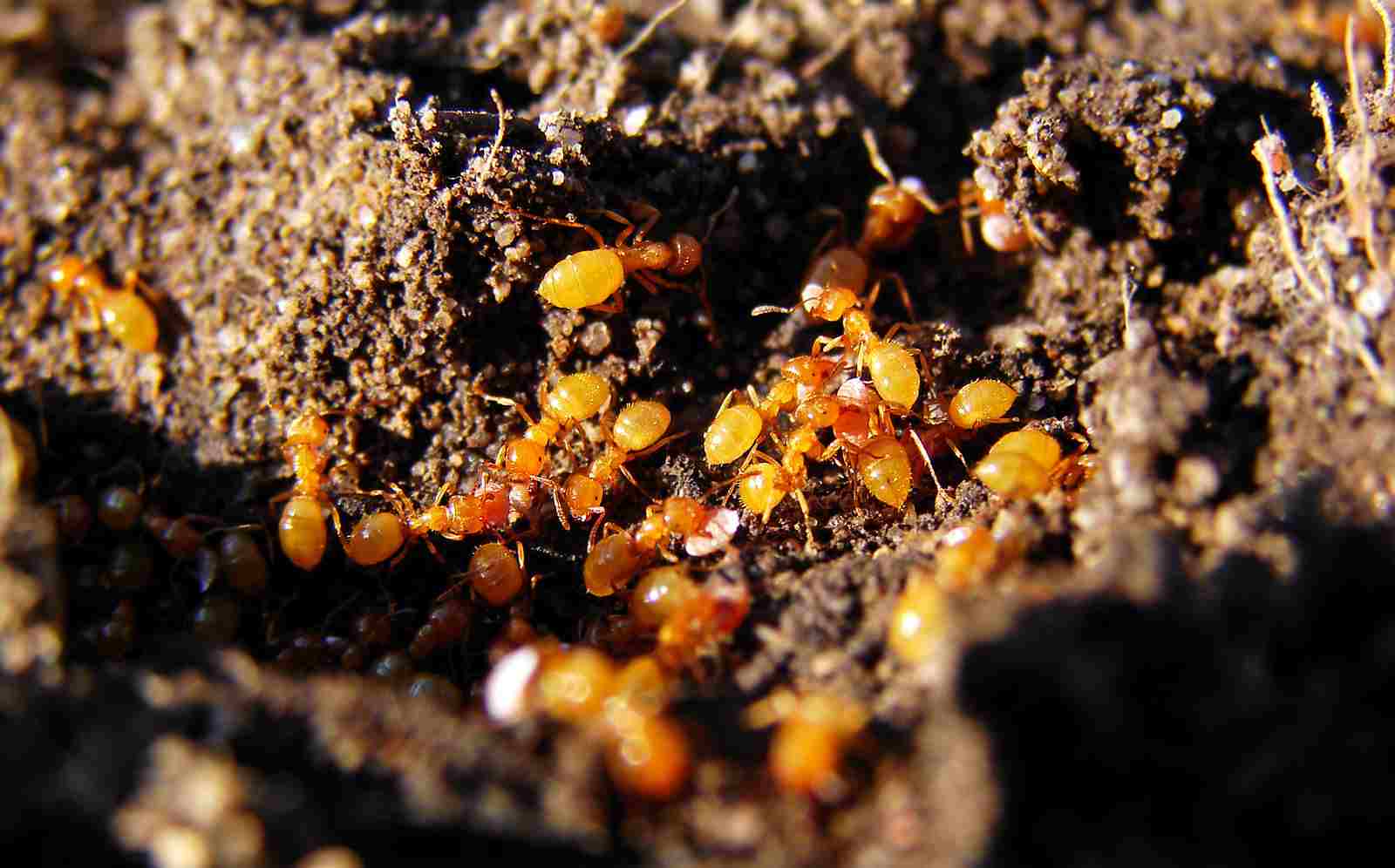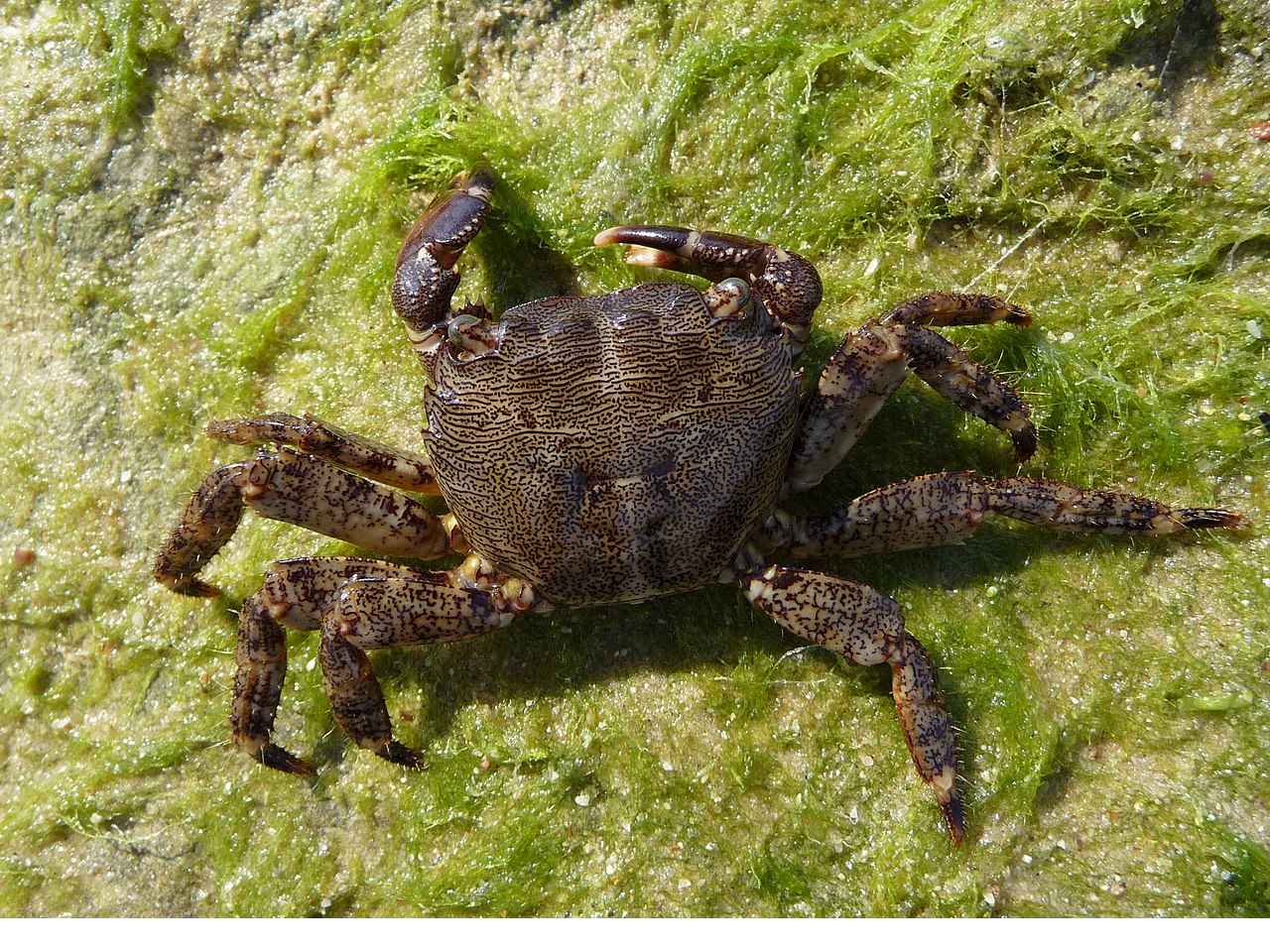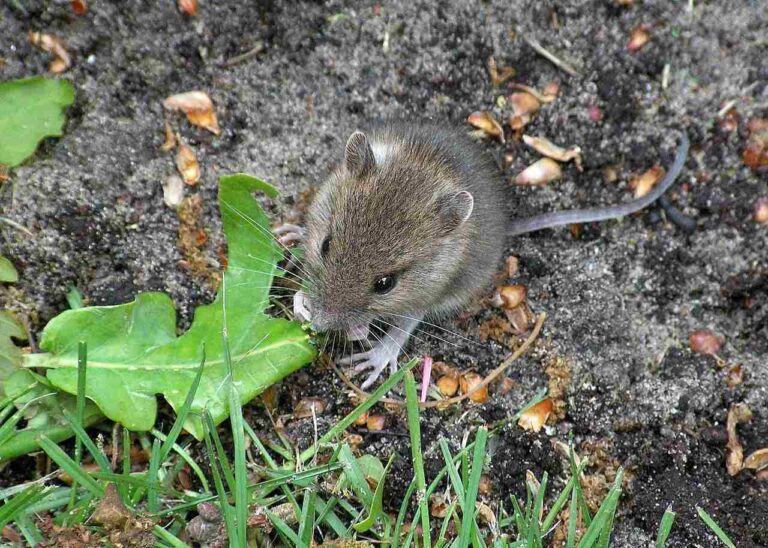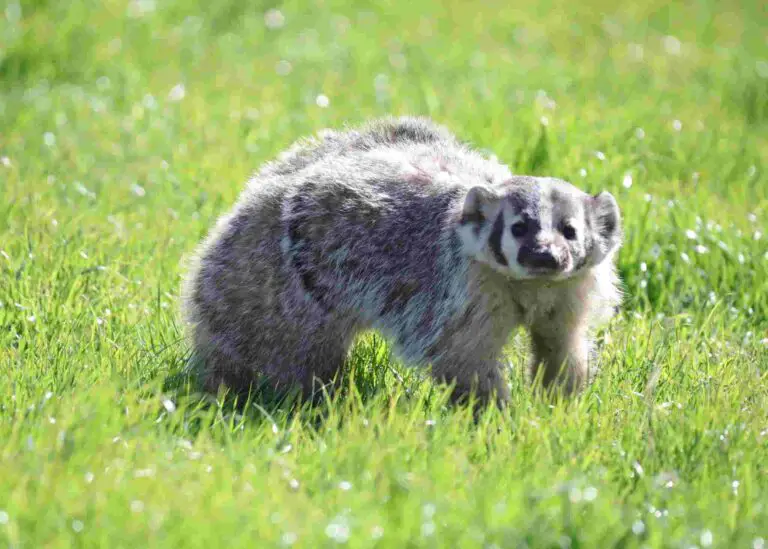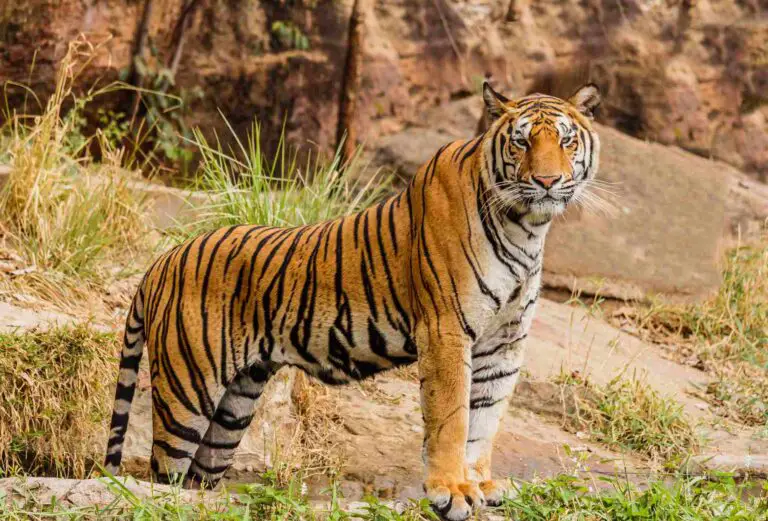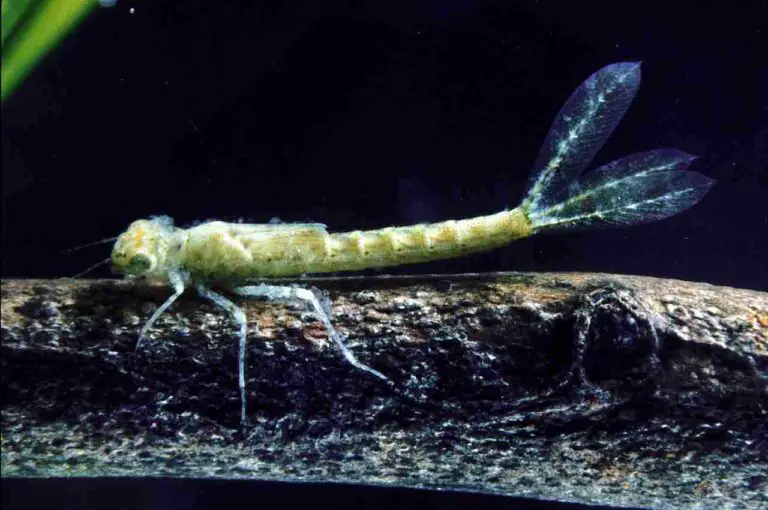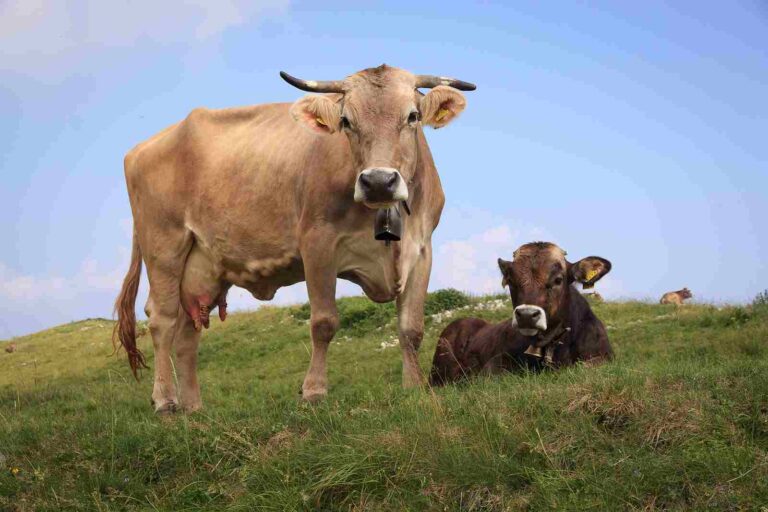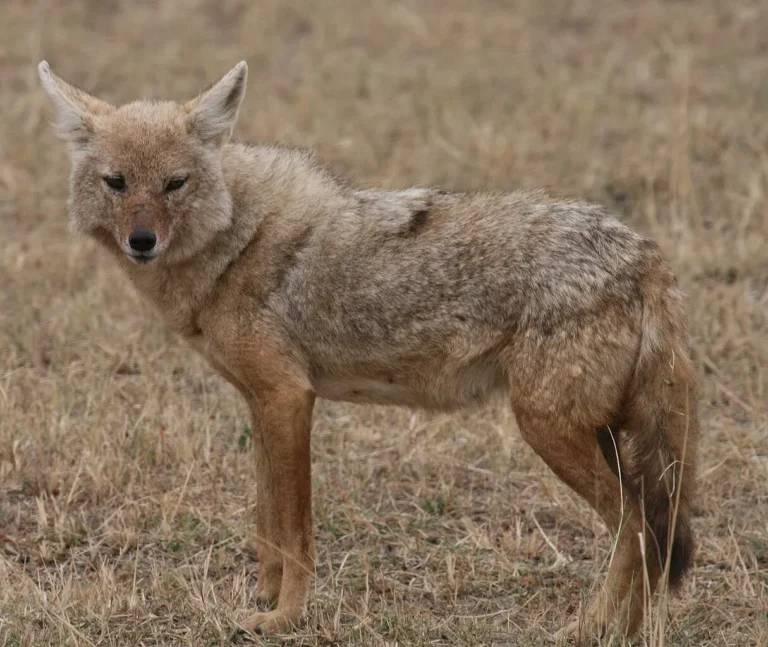Is a Zebra a Primary Consumer? Clarifying the Ecologic Position of Zebras
A zebra is a primary consumer in ecosystems, as its food sources exclusively comprise of plant matter.
This article discusses the consumer position of zebras in the food chain, and answers related questions.
Reasons Why Zebras are Classified as Primary Consumers
1. Exclusive Herbivory
Exclusive Herbivory is one of the key reasons why zebras are classified as primary consumers. Zebras are not omnivorous or carnivorous; they exclusively graze on grasses and occasionally browse on leaves. This dietary behavior sets them apart from other animals that consume a wider range of food sources.
By focusing solely on plant material, zebras play a crucial role in the ecosystem as primary consumers. Their herbivorous diet allows them to obtain energy and nutrients directly from plants. This makes them an important link in the food chain, as they convert the energy stored in plants into a form that can be utilized by other organisms.
Zebras’ preference for grasses is particularly significant. Grasses are abundant in many habitats and serve as a primary food source for numerous herbivores. Zebras’ grazing behavior helps to regulate plant populations by preventing overgrowth and maintaining a balanced ecosystem. They play a vital role in controlling the growth of grasses, which in turn affects the availability of resources for other herbivores and the overall structure of the habitat.
Moreover, zebras’ exclusive herbivory contributes to the biodiversity and species richness of their environment. By consuming a variety of grass species, zebras help to maintain a diverse plant community. This diversity is essential for supporting a wide range of other organisms, including insects, birds, and mammals that rely on specific plant species for food and shelter.
2. Lack of Predatory Characteristics
Another reason why zebras are classified as primary consumers is their lack of predatory characteristics. Unlike animals such as lions or leopards, zebras do not possess sharp claws, prominent canines, or talons that are typically associated with predators. Instead, zebras have evolved physical traits that are more suited for herbivorous feeding.
Zebras have hooves instead of claws, which are adapted for walking and grazing on grasses. Their hooves are broad and sturdy, allowing them to navigate through various terrains and efficiently graze on the vegetation. This adaptation is not conducive to hunting or capturing prey, further emphasizing their role as primary consumers.
In addition to their physical characteristics, zebras also lack the hunting instincts and behaviors commonly observed in predators. They do not exhibit stalking or ambushing behaviors, nor do they possess the speed or agility required for chasing down prey. Zebras are more inclined towards social behaviors, living in herds and relying on their numbers for protection against predators.
The absence of predatory characteristics in zebras is a clear indication of their primary consumer status. Their physical adaptations and behavioral traits align with those of herbivores, reinforcing their role as grazers and browsers in the ecosystem. By consuming plant material, zebras contribute to the energy flow and nutrient cycling within their habitat, playing a vital role in maintaining the balance of the ecosystem.
Furthermore, the lack of predatory characteristics in zebras also highlights their vulnerability to higher consumers in their habitat. Animals such as lions and leopards prey on zebras, taking advantage of their herbivorous nature and lack of defensive mechanisms. This predation pressure further solidifies the classification of zebras as primary consumers, as they serve as a crucial food source for higher trophic levels in the food chain.
3. Zebras are Prey for Higher Consumers in Their Habitat
Zebras are classified as primary consumers because they serve as prey for higher consumers in their habitat, such as leopards and lions in savannas. This is a crucial aspect of their ecological position and reinforces their role as primary consumers in the food chain.
Zebras, with their herbivorous diet, provide a valuable food source for predators. Their presence in the ecosystem supports the survival and population dynamics of these higher consumers. Zebras’ vulnerability to predation is a key factor in their classification as primary consumers.
In the savanna ecosystem, zebras play a vital role in the energy flow and nutrient cycling. They consume plant material, such as grasses and leaves, and convert it into energy through digestion. This energy is then transferred to the predators that prey on zebras, sustaining their populations.
Zebras’ herbivorous feeding habits and their position as prey animals contribute to the overall balance and stability of the ecosystem. By consuming plant material, zebras regulate plant populations, preventing overgrowth and maintaining a diverse plant community. This, in turn, supports the habitat and resources for other herbivores and primary consumers.
Furthermore, zebras’ role as prey also contributes to the biodiversity and species richness of the ecosystem. Predators rely on a variety of prey species for their survival, and zebras are an important component of this diversity. Their presence ensures a healthy predator-prey dynamic, promoting the coexistence of multiple species within the ecosystem.
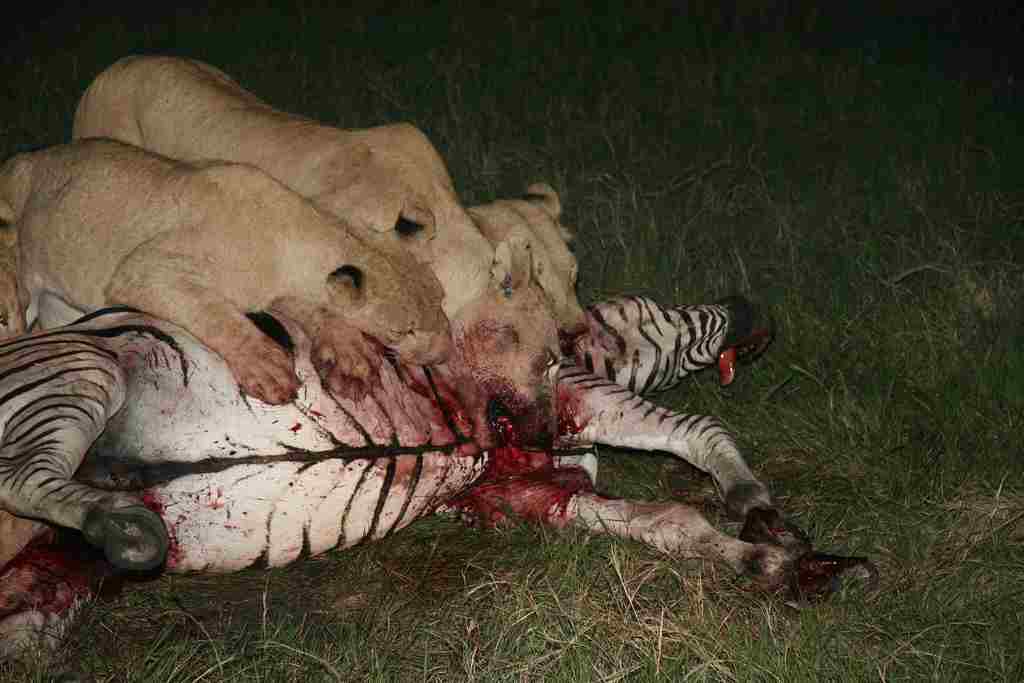
Is a Zebra a Producer?
A zebra is not a producer because it must feed on other organisms (that is; plants) to survive, and is not capable of synthesizing organic molecules or biomass, like typical producers.
Reasons Why a Zebra is Not a Producer
1. Heterotrophic Mode of Feeding
One of the key reasons why zebras are not classified as producers is their heterotrophic mode of feeding. Unlike plants and other autotrophs, zebras cannot conduct photosynthesis.
Photosynthesis is the process by which plants use sunlight, water, and carbon dioxide to produce their own food in the form of glucose. This ability to produce their own food is what distinguishes producers from consumers in the ecological hierarchy.
Zebras, on the other hand, rely on consuming organic matter for their energy and nutrient needs. They are herbivores, which means they primarily feed on plant material such as grasses, leaves, and stems. This makes them consumers in the food chain, as they obtain their energy by consuming the producers (plants) in their habitat.
In simple terms, zebras cannot make their own food like plants do. Instead, they must rely on consuming the food that is available to them in their environment. This is why they are considered consumers rather than producers.
Their heterotrophic mode of feeding is evident in their digestive system, which is adapted to break down and extract nutrients from plant material. Zebras have specialized teeth and a complex digestive tract that allows them to efficiently process and extract nutrients from the tough, fibrous plant matter they consume.
2. Zebras Lack Biological Similarity to Producers
Zebras lack biological similarity to producers, which is another reason why they are not classified as such. Unlike plants, zebras do not possess chlorophyll, which is essential for photosynthesis. Chlorophyll allows plants to convert sunlight into energy, enabling them to produce their own food. Without this crucial pigment, zebras are unable to generate energy from sunlight.
Additionally, zebras do not have roots or leaves like plants do. Roots anchor plants in the ground and absorb water and nutrients from the soil, while leaves are responsible for photosynthesis. These structures are vital for the growth and survival of plants, but zebras do not possess them.
Furthermore, zebras lack flagella, which are whip-like appendages found in certain organisms like algae. Flagella aid in movement and are crucial for some autotrophic organisms. Since zebras do not possess flagella, they are unable to move in the same way as autotrophs that rely on these structures.
In summary, zebras lack the biological characteristics that are essential for producers. They do not have chlorophyll, roots, leaves, or flagella. These features are fundamental for plants to carry out photosynthesis, absorb nutrients, and move. Without these traits, zebras are unable to produce their own food or perform the functions necessary to be classified as producers in the ecological hierarchy.
Instead, zebras rely on consuming plant material to meet their energy and nutrient needs. They are herbivores that feed on grasses, leaves, and stems. By consuming producers, zebras play a vital role in the food chain as consumers. They obtain energy by consuming the organic matter available in their environment, rather than producing their own food like plants.
3. Producers are For Sources for Zebras
Producers, such as vascular plants, serve as a food source for zebras. This means that zebras consume the organic matter produced by plants, placing them at a higher level in the food chain. However, despite their reliance on plants for sustenance, zebras are not classified as producers themselves.
One reason why zebras are not considered producers is their inability to carry out photosynthesis. Photosynthesis is the process by which plants convert sunlight into energy, allowing them to produce their own food. Zebras, on the other hand, lack the necessary chlorophyll pigment to perform photosynthesis. Without this crucial pigment, zebras are unable to generate energy from sunlight and produce their own food.
Additionally, zebras do not possess the biological structures that are characteristic of producers. Unlike plants, zebras do not have roots or leaves. Roots anchor plants in the ground and absorb water and nutrients from the soil, while leaves are responsible for photosynthesis. These structures are vital for the growth and survival of plants, but zebras do not possess them.
Furthermore, zebras lack the ability to produce their own nutrients through autotrophic processes. Autotrophs, such as plants, are capable of synthesizing organic compounds from inorganic substances. Zebras, however, rely on consuming plant material to meet their energy and nutrient needs. They are herbivores that feed on grasses, leaves, and stems, obtaining energy by consuming the organic matter available in their environment.
What Type of Consumer is a Zebra?
Zebras are classified as herbivorous primary consumers. This means that they exclusively feed on plant matter and occupy the second level of the food chain or energy pyramid.
As herbivores, zebras rely solely on plant material for their sustenance. They feed on grasses, leaves, and stems, obtaining their energy by consuming the organic matter available in their environment. Zebras have evolved specialized teeth and digestive systems that allow them to efficiently extract nutrients from plant material. Their diet consists mainly of coarse grasses, which they graze on throughout the day.
Being primary consumers, zebras occupy an important position in the food chain. They consume producers, such as grasses and other plants, and serve as a link between the energy captured by plants and the higher levels of the food chain. By consuming plant material, zebras transfer energy from autotrophs (producers) to heterotrophs (higher consumers). This energy flow is crucial for the functioning of ecosystems and the maintenance of biodiversity.
In the energy pyramid, primary consumers like zebras occupy the second trophic level. They are positioned above the producers and below the secondary consumers. Zebras play a vital role in regulating plant populations by controlling the abundance of vegetation through their feeding habits. Their grazing behavior helps maintain a balance between plant growth and herbivory, preventing any one plant species from dominating the ecosystem.
Ecological Importance of Zebras as Consumers
1. Regulation of Plant Populations
Zebras play a crucial role in the ecosystem by regulating plant populations. This is important for maintaining a balanced and healthy environment.
One reason why zebras are important as consumers is their exclusive herbivory. Zebras feed primarily on grass and other vegetation, which helps control the growth of plants in their habitat. By consuming large quantities of plant material, zebras prevent overgrowth and maintain a diverse plant community.
Another reason is that zebras have a unique digestive system that allows them to efficiently process and break down plant matter. They have specialized teeth and a complex digestive tract that enables them to extract nutrients from tough and fibrous plant material. This ability to digest and utilize plant material effectively contributes to the regulation of plant populations.
Zebras also play a role in seed dispersal. As they graze on grasses and other plants, they inadvertently consume seeds along with the vegetation. These seeds then pass through the zebra’s digestive system and are deposited in different areas through their feces. This dispersal of seeds helps to promote the growth and distribution of plant species, contributing to the overall biodiversity of the ecosystem.
Furthermore, zebras are selective grazers. They prefer certain types of grasses over others, which can lead to changes in the composition of plant species in their habitat. This selective grazing behavior can help prevent the dominance of a single plant species and promote a more diverse plant community.
2. Contribution to Ecosystem Biodiversity and Species Richness
Zebras play a crucial role in maintaining ecosystem biodiversity and species richness. This is an important reason why zebras are considered important consumers in their habitat.
One way zebras contribute to ecosystem biodiversity is through their grazing behavior. Zebras are selective grazers, meaning they prefer certain types of grasses over others. This selective grazing behavior can lead to changes in the composition of plant species in their habitat. By consuming specific types of grasses, zebras prevent the dominance of a single plant species and promote a more diverse plant community. This diversity of plant species is essential for supporting a wide range of other organisms, including insects, birds, and mammals.
In addition to their grazing behavior, zebras also play a role in seed dispersal. As zebras graze on grasses and other plants, they inadvertently consume seeds along with the vegetation. These seeds then pass through the zebra’s digestive system and are deposited in different areas through their feces. This dispersal of seeds helps to promote the growth and distribution of plant species, contributing to the overall biodiversity of the ecosystem.
Furthermore, zebras serve as a food source for higher-level consumers in the food chain. Predators such as lions and hyenas rely on zebras as a primary food source. By providing a food source for these predators, zebras contribute to the overall species richness and diversity of the ecosystem. This predator-prey relationship is essential for maintaining a balanced and healthy ecosystem.
3. Facilitation of Energy Transfer from Autotrophs to Heterotrophs
Zebras play a crucial role in facilitating the transfer of energy from autotrophs to heterotrophs in the ecosystem. This is important because it ensures that energy flows efficiently through the food chain, sustaining the entire ecosystem.
One way zebras facilitate energy transfer is through their herbivorous diet. Zebras exclusively feed on plants, such as grasses and leaves, which are autotrophs. Autotrophs, also known as producers, convert sunlight into energy through photosynthesis. By consuming these plants, zebras obtain the energy stored in them and transfer it to their own bodies.
When zebras consume plants, they break down the complex carbohydrates and other nutrients present in the plant material through digestion. This process releases the stored energy, which is then used by zebras for various metabolic activities, such as growth, reproduction, and movement. In this way, zebras act as intermediaries, transferring the energy from autotrophs to themselves as heterotrophs.
Furthermore, zebras also contribute to energy transfer by serving as a food source for other heterotrophs in the ecosystem. Predators such as lions and hyenas rely on zebras as a primary food source. When these predators consume zebras, they obtain the energy stored in the zebra’s body. This energy is then used by the predators to fuel their own metabolic processes and sustain their populations.
By facilitating the transfer of energy from autotrophs to heterotrophs, zebras ensure that energy is efficiently utilized within the ecosystem. This energy flow is essential for the survival and functioning of all organisms within the ecosystem. Without zebras as consumers, the energy stored in autotrophs would not be effectively transferred to higher-level consumers, leading to imbalances in the food chain and potential disruptions to the ecosystem.
FAQs
1. Is a Zebra a Consumer, Producer, or Decomposer?
Zebras are classified as consumers in the ecological context. As consumers, zebras obtain their energy and nutrients by feeding on producers, such as plants. They are herbivores, exclusively consuming plant material, which makes them primary consumers in the food chain. Zebras play a crucial role in the ecosystem as consumers, contributing to the regulation of plant populations and the transfer of energy from autotrophs to heterotrophs.
Unlike producers, zebras do not have the ability to synthesize biomass through photosynthesis. They lack the necessary biological characteristics and mechanisms to produce their own food. Instead, they rely on consuming plant material to meet their nutritional needs. This heterotrophic mode of feeding further supports their classification as consumers rather than producers.
On the other hand, zebras are not decomposers either. Decomposers are organisms that break down dead organic matter, such as fallen leaves or animal carcasses, into simpler substances. Zebras do not exhibit saprophytic or detritivorous behaviors, which are characteristic of decomposers. Therefore, they do not participate in the decomposition process.
2. Is a Zebra a Producer or Consumer?
When considering the ecological position of zebras, it is important to clarify whether they are producers or consumers. Zebras are unequivocally consumers and not producers.
As mentioned earlier, zebras are herbivores, which means they exclusively consume plant material. They do not possess the ability to synthesize their own food through photosynthesis, like producers do. Instead, zebras rely on consuming plants to obtain the energy and nutrients they need to survive. This makes them consumers in the ecological context.
Unlike producers, zebras lack the biological similarity and mechanisms required to produce their own food. They do not have chloroplasts or other structures necessary for photosynthesis. Instead, zebras have evolved to efficiently digest and extract nutrients from plant material, utilizing their specialized digestive systems to break down cellulose and extract energy from it.
In summary, zebras are consumers, specifically herbivores, as they rely on consuming plant material for their energy and nutritional needs. They are not producers because they do not possess the ability to synthesize their own food through photosynthesis. By understanding the ecological role of zebras as consumers, we can appreciate their importance in regulating plant populations and facilitating energy transfer within ecosystems.
3. Is a Zebra a Herbivore, Carnivore, Omnivore, or Producer?
When considering the dietary habits of zebras, it is important to clarify whether they are herbivores, carnivores, omnivores, or producers. Zebras are unequivocally herbivores, meaning they exclusively consume plant material for their sustenance.
Unlike carnivores, which primarily feed on other animals, and omnivores, which have a diet that includes both plant and animal matter, zebras rely solely on plant material as their source of nutrition. They have evolved to efficiently digest and extract nutrients from various types of vegetation, such as grasses, leaves, and stems.
Zebras possess specialized digestive systems that allow them to break down cellulose, a complex carbohydrate found in plant cell walls. This adaptation enables them to extract energy and nutrients from plant material, even though cellulose is difficult to digest for many other animals.
In summary, zebras are herbivores, as they consume only plant material. They do not possess the characteristics or dietary habits of carnivores or omnivores, which rely on animal matter for their nutritional needs. Additionally, zebras are not producers because they lack the ability to synthesize their own food through photosynthesis.
Understanding the dietary classification of zebras as herbivores is crucial in comprehending their ecological role and impact on ecosystems. By consuming plant material, zebras contribute to the regulation of plant populations, facilitate energy transfer within the food web, and support the overall biodiversity and species richness of their habitats.
4. Is a Zebra a Herbivore?
When considering the dietary habits of zebras, it is important to understand their classification as herbivores. Herbivores are animals that exclusively consume plant material for their sustenance. Zebras fall into this category, as they rely solely on plant-derived biomass as their source of nutrition.
Zebras have evolved to efficiently digest and extract nutrients from various types of vegetation, such as grasses, leaves, and stems. Their specialized digestive systems enable them to break down cellulose, a complex carbohydrate found in plant cell walls. This adaptation allows zebras to extract energy and nutrients from plant material, even though cellulose is difficult to digest for many other animals.
By consuming plant-derived biomass, zebras play a crucial role in the ecosystem. They contribute to the regulation of plant populations by grazing on vegetation, which helps to control plant growth and prevent overpopulation. This, in turn, maintains a balance within the ecosystem and ensures the availability of resources for other organisms.
Furthermore, zebras facilitate energy transfer within the food web. As primary consumers, they consume plant material and convert it into energy, which is then passed on to higher trophic levels. This energy transfer is essential for the survival and functioning of the entire ecosystem.
In addition to their role in energy transfer, zebras also support the overall biodiversity and species richness of their habitats. By consuming a variety of plant species, they contribute to the dispersion of seeds and the maintenance of plant diversity. This, in turn, provides habitat and food sources for a wide range of other organisms.
5. Is a Zebra a Secondary Consumer?
When considering the ecological position of zebras, it is important to clarify whether they are classified as secondary consumers. Secondary consumers are organisms that feed on primary consumers, which in turn feed on producers. However, zebras do not fit into this category.
Zebras are herbivores and exclusively consume plant material for their sustenance. They do not feed on other animals, which is a characteristic of secondary consumers. Instead, zebras rely on grasses, leaves, and stems as their primary source of nutrition. Their specialized digestive systems allow them to efficiently extract nutrients from plant material.
By consuming plant-derived biomass, zebras play a crucial role in energy transfer within the ecosystem. As primary consumers, they convert plant material into energy, which is then passed on to higher trophic levels. This energy transfer is essential for the functioning and balance of the entire ecosystem.
Zebras contribute to the regulation of plant populations by grazing on vegetation. This helps control plant growth and prevent overpopulation, ensuring the availability of resources for other organisms. Additionally, zebras support biodiversity and species richness in their habitats. By consuming a variety of plant species, they contribute to the dispersion of seeds and the maintenance of plant diversity, providing habitat and food sources for a wide range of other organisms.
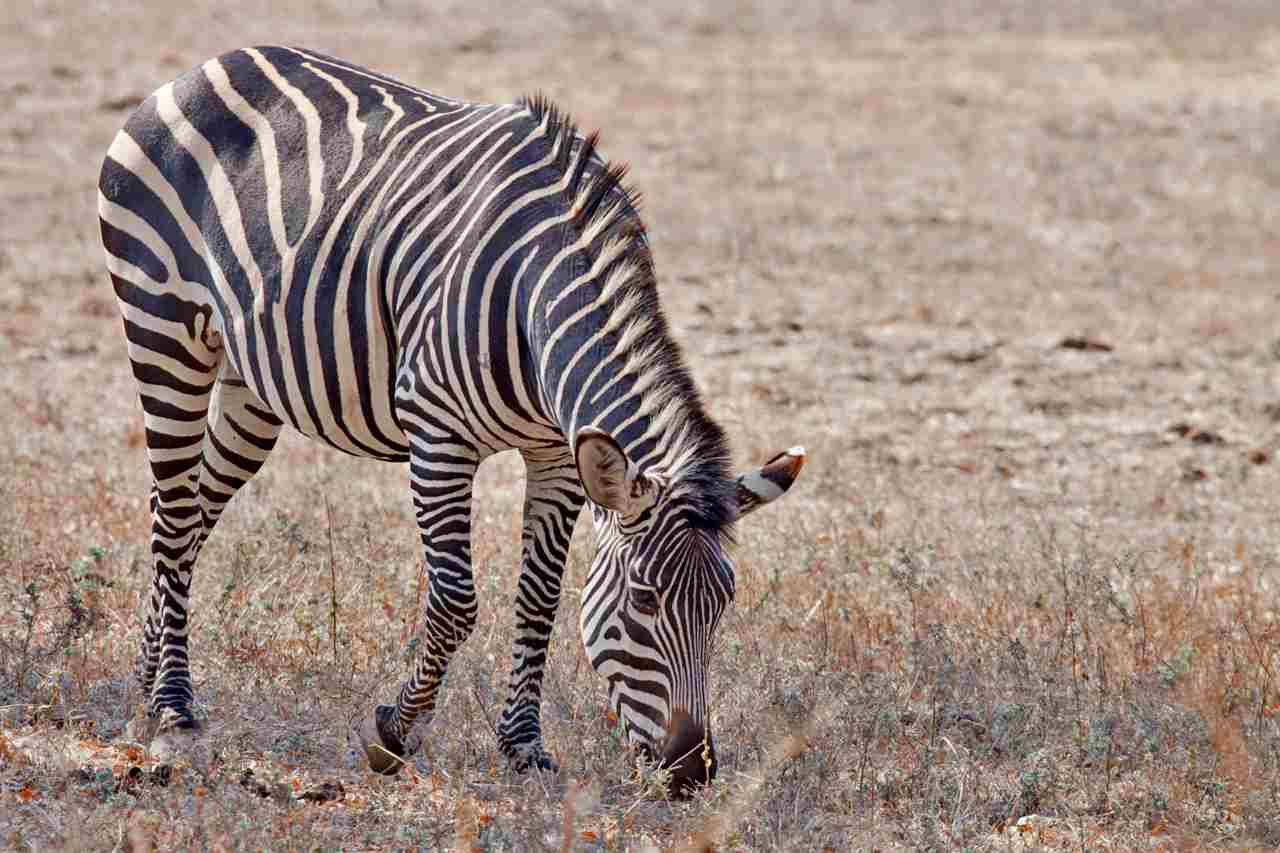
6. What Do Zebras Eat?
Zebras primarily consume grass as their main source of food. They are herbivores that rely on grazing to meet their nutritional needs. Zebras have specialized teeth and digestive systems that allow them to efficiently process and extract nutrients from grasses. This adaptation enables them to thrive in their natural habitats, which are often grasslands or savannas.
In addition to grass, zebras may occasionally browse on leaves, buds, and other plant parts. This behavior provides them with additional nutrients and variety in their diet. However, grass remains the staple food for zebras, and they spend a significant amount of time grazing to meet their energy requirements.
Zebras’ preference for grass is influenced by their physiological adaptations and the availability of this food source in their habitats. Grasses are abundant and provide zebras with the necessary nutrients, such as carbohydrates and fiber, for their survival and growth. The high fiber content in grass also aids in their digestion and helps maintain a healthy digestive system.
By consuming grass and occasionally browsing on other plant parts, zebras play a vital role in the ecosystem. They contribute to the regulation of plant populations by controlling the growth of grasses and preventing overgrazing. This ensures the sustainability of the grassland ecosystem and provides a balanced habitat for other organisms.
Conclusion
* Zebras are classified as primary consumers due to their exclusive herbivory, lack of predatory characteristics, and being prey for higher consumers in their habitat.
* Zebras are not producers because they have a heterotrophic mode of feeding, lack biological similarity to producers, and rely on producers as food sources.
* Zebras are herbivores and play a crucial role in regulating plant populations, contributing to ecosystem biodiversity and species richness, and facilitating energy transfer from autotrophs to heterotrophs.

